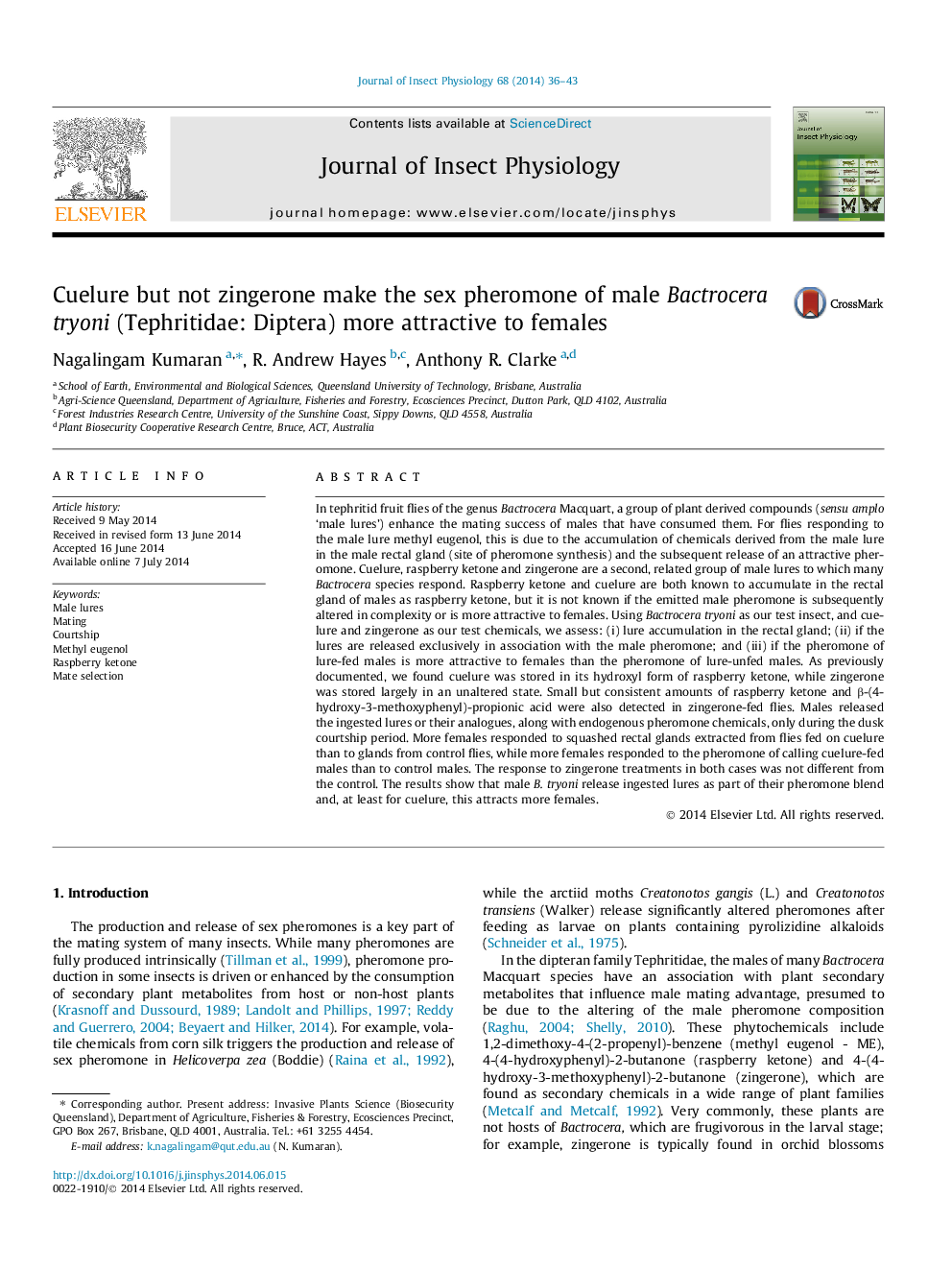| کد مقاله | کد نشریه | سال انتشار | مقاله انگلیسی | نسخه تمام متن |
|---|---|---|---|---|
| 5921596 | 1571002 | 2014 | 8 صفحه PDF | دانلود رایگان |

- Male B. tryoni accumulate ingested cuelure and zingerone in their rectal glands.
- These compounds are released along with endogenous pheromone volatiles.
- Pheromones of cuelure-fed males attracted more females than those of unfed males.
- Pheromones of zingerone-fed males were not more attractive to females.
In tephritid fruit flies of the genus Bactrocera Macquart, a group of plant derived compounds (sensu amplo 'male lures') enhance the mating success of males that have consumed them. For flies responding to the male lure methyl eugenol, this is due to the accumulation of chemicals derived from the male lure in the male rectal gland (site of pheromone synthesis) and the subsequent release of an attractive pheromone. Cuelure, raspberry ketone and zingerone are a second, related group of male lures to which many Bactrocera species respond. Raspberry ketone and cuelure are both known to accumulate in the rectal gland of males as raspberry ketone, but it is not known if the emitted male pheromone is subsequently altered in complexity or is more attractive to females. Using Bactrocera tryoni as our test insect, and cuelure and zingerone as our test chemicals, we assess: (i) lure accumulation in the rectal gland; (ii) if the lures are released exclusively in association with the male pheromone; and (iii) if the pheromone of lure-fed males is more attractive to females than the pheromone of lure-unfed males. As previously documented, we found cuelure was stored in its hydroxyl form of raspberry ketone, while zingerone was stored largely in an unaltered state. Small but consistent amounts of raspberry ketone and β-(4-hydroxy-3-methoxyphenyl)-propionic acid were also detected in zingerone-fed flies. Males released the ingested lures or their analogues, along with endogenous pheromone chemicals, only during the dusk courtship period. More females responded to squashed rectal glands extracted from flies fed on cuelure than to glands from control flies, while more females responded to the pheromone of calling cuelure-fed males than to control males. The response to zingerone treatments in both cases was not different from the control. The results show that male B. tryoni release ingested lures as part of their pheromone blend and, at least for cuelure, this attracts more females.
171
Journal: Journal of Insect Physiology - Volume 68, September 2014, Pages 36-43